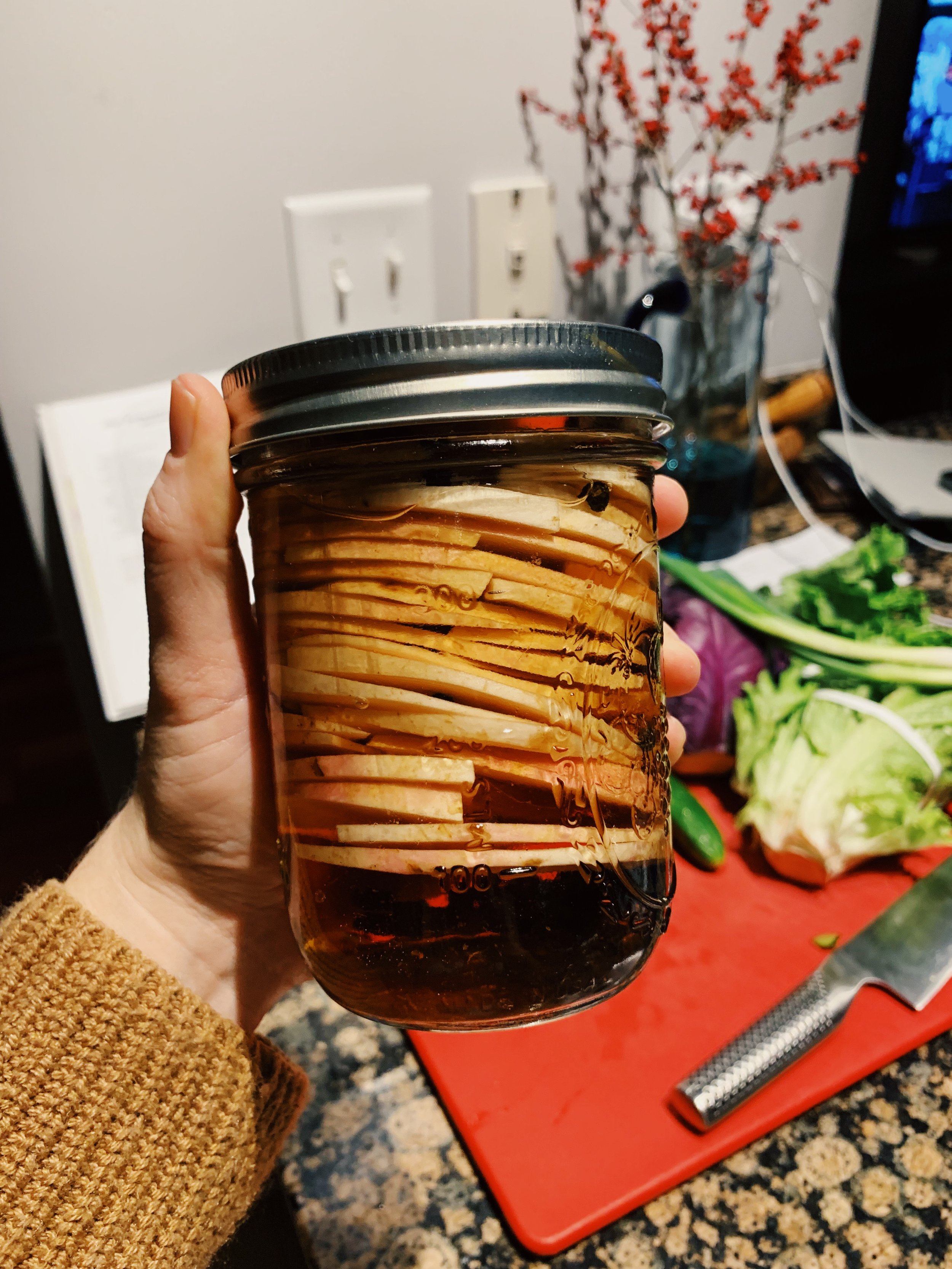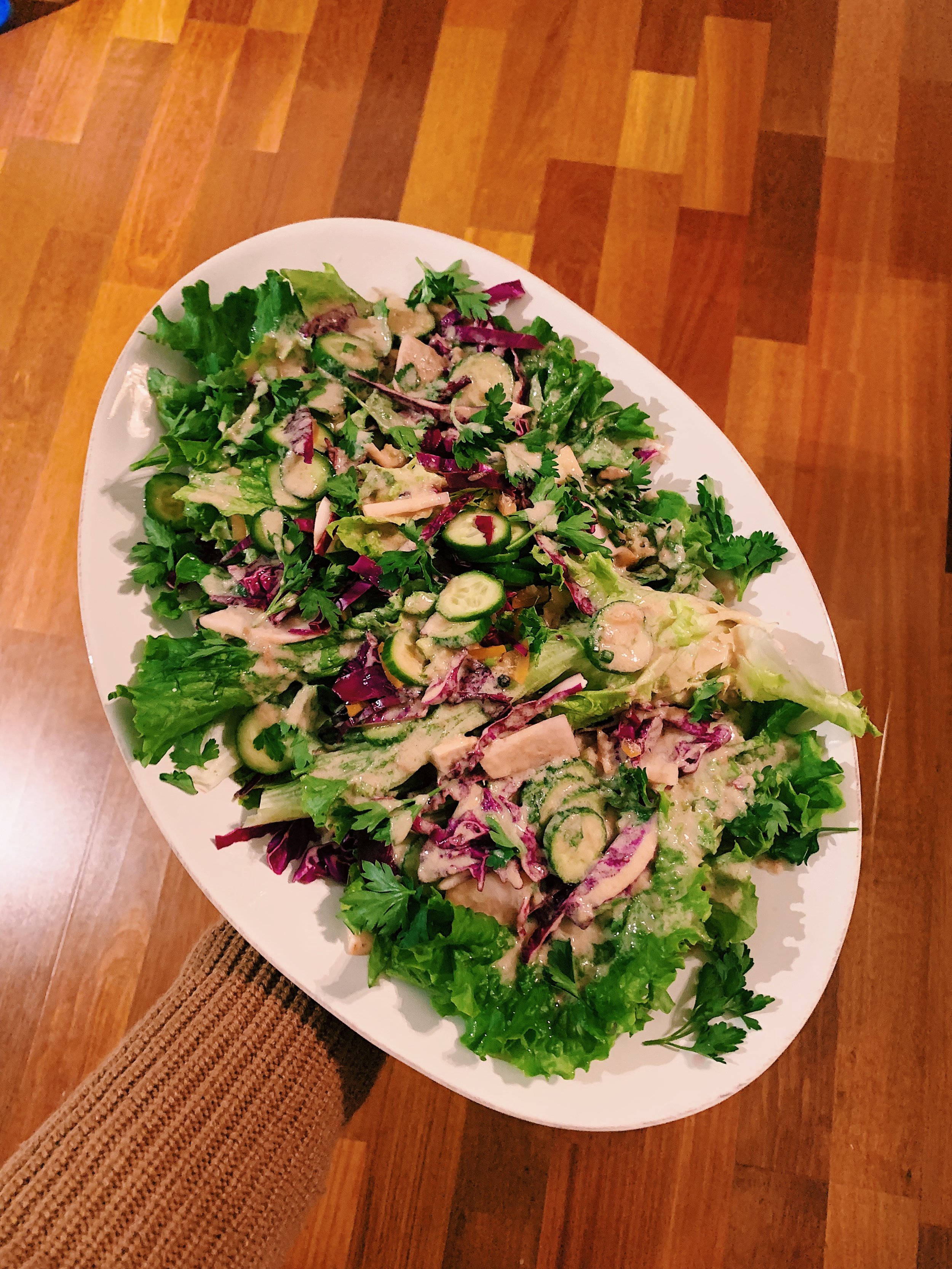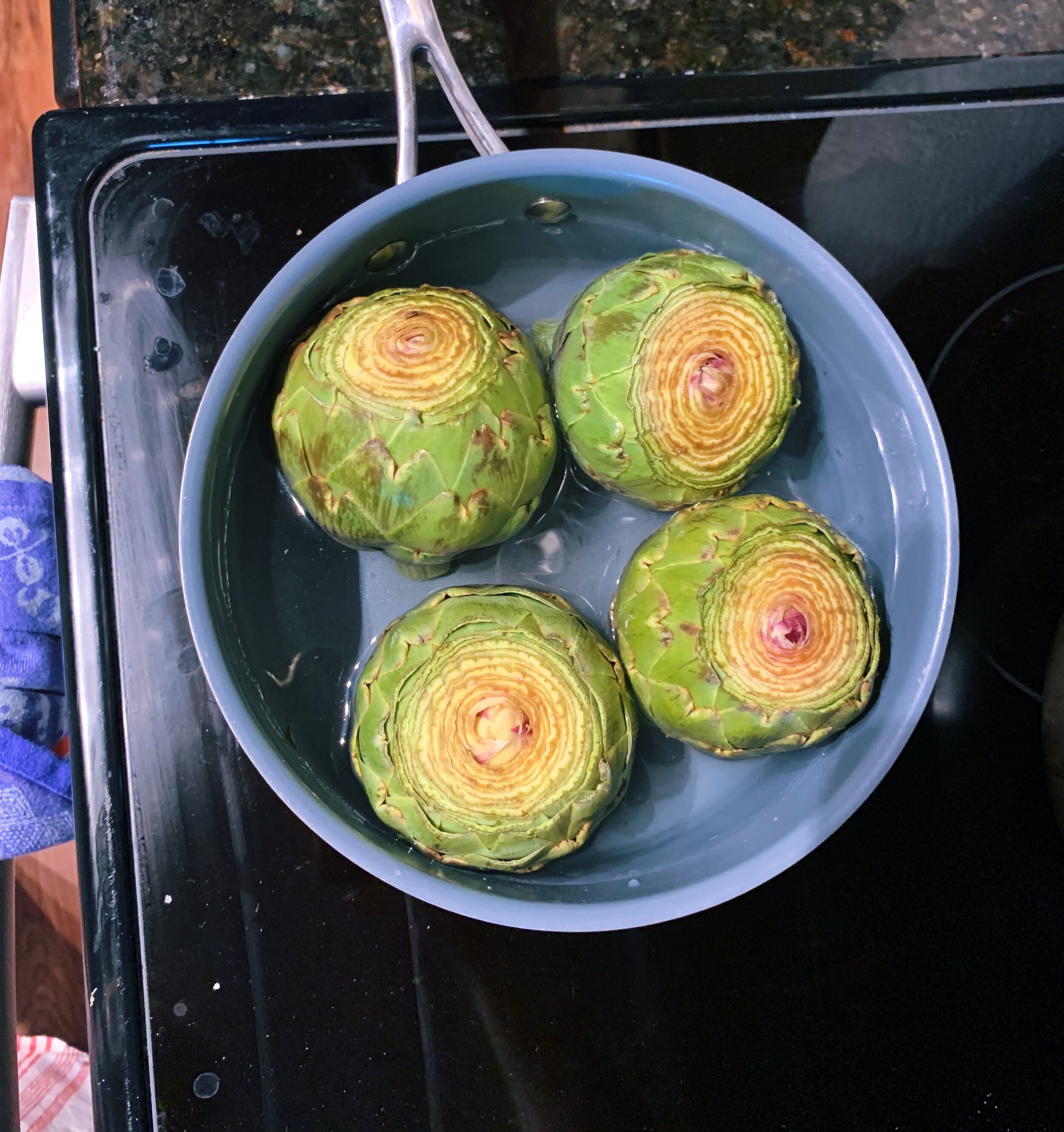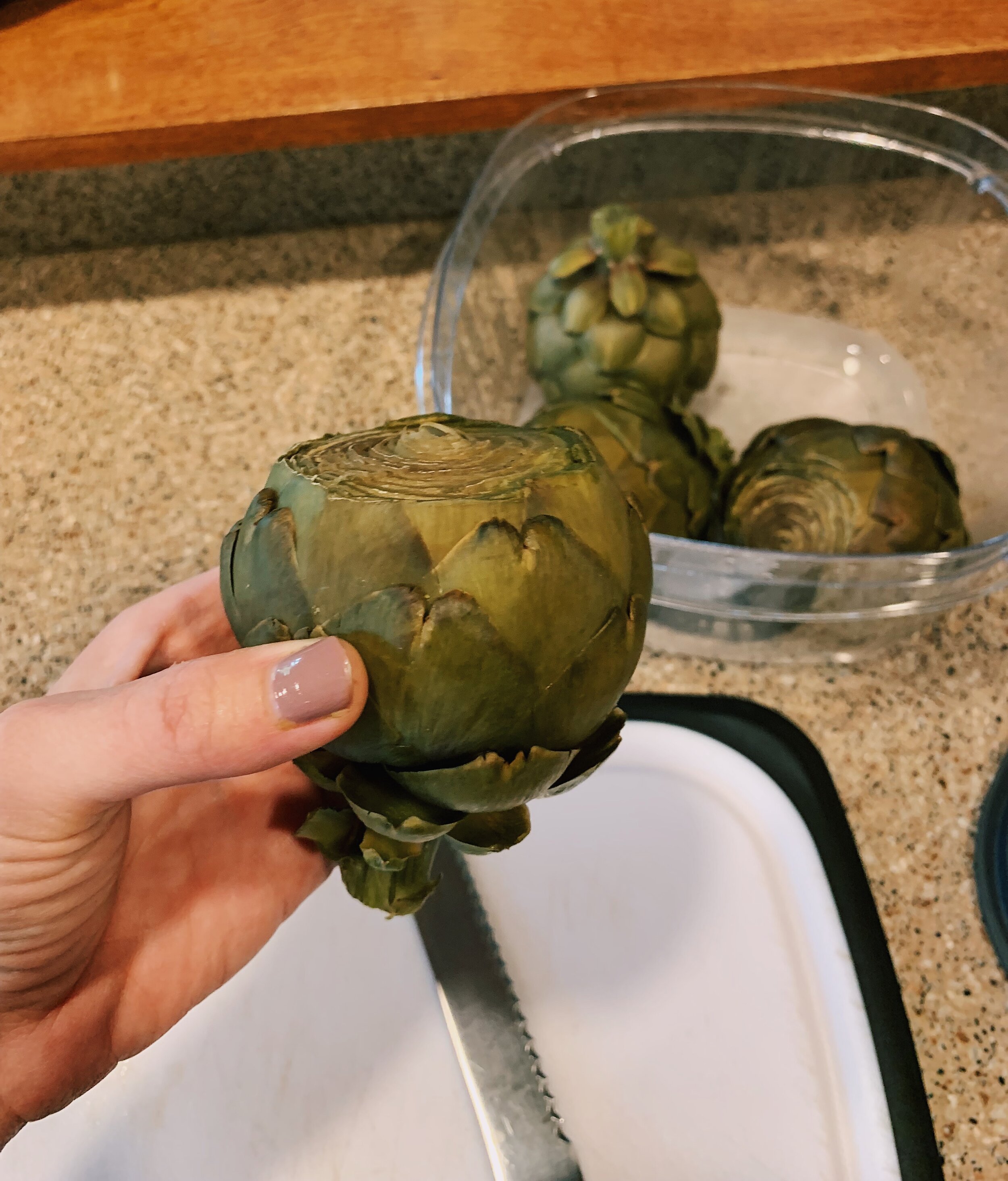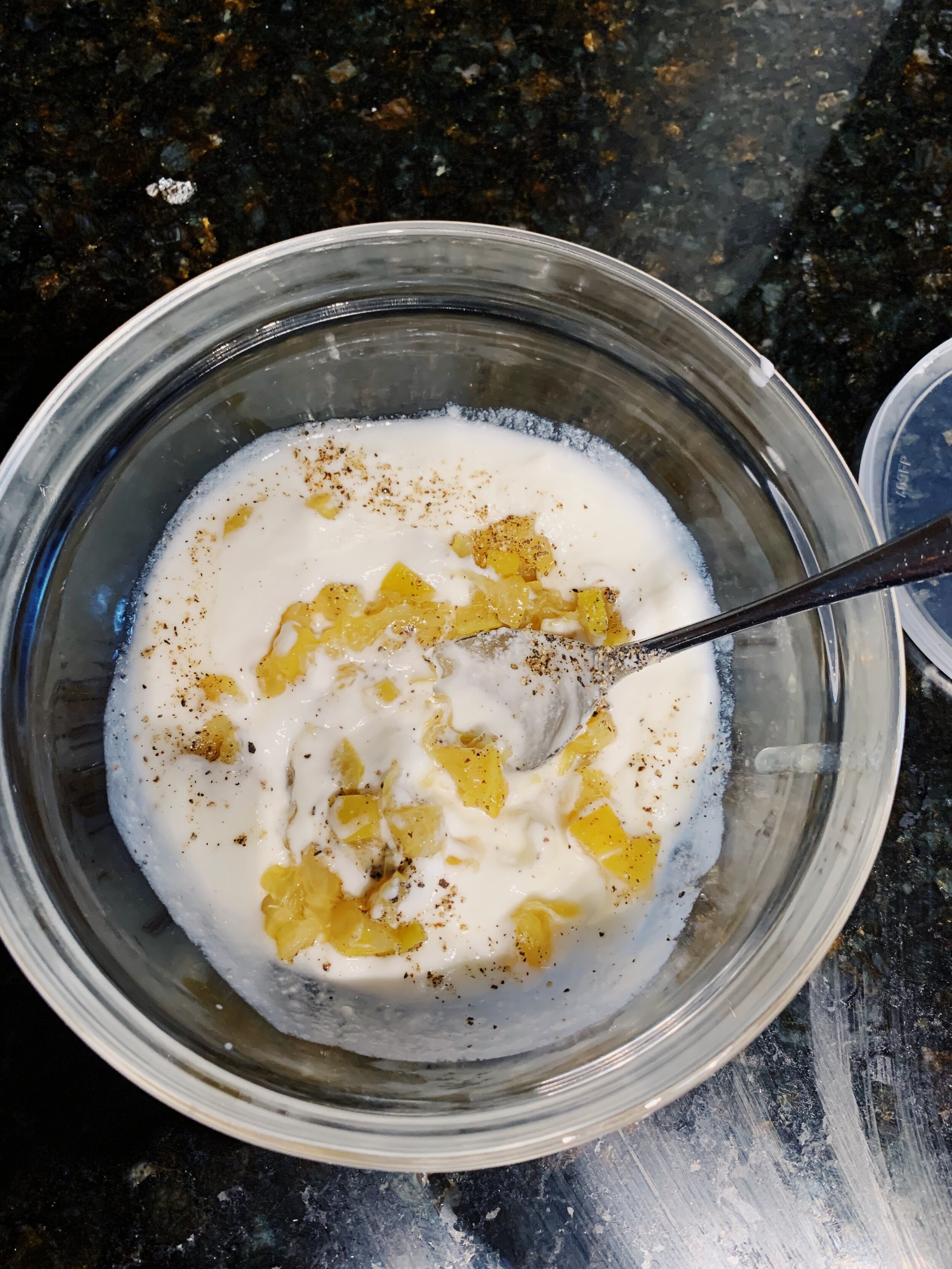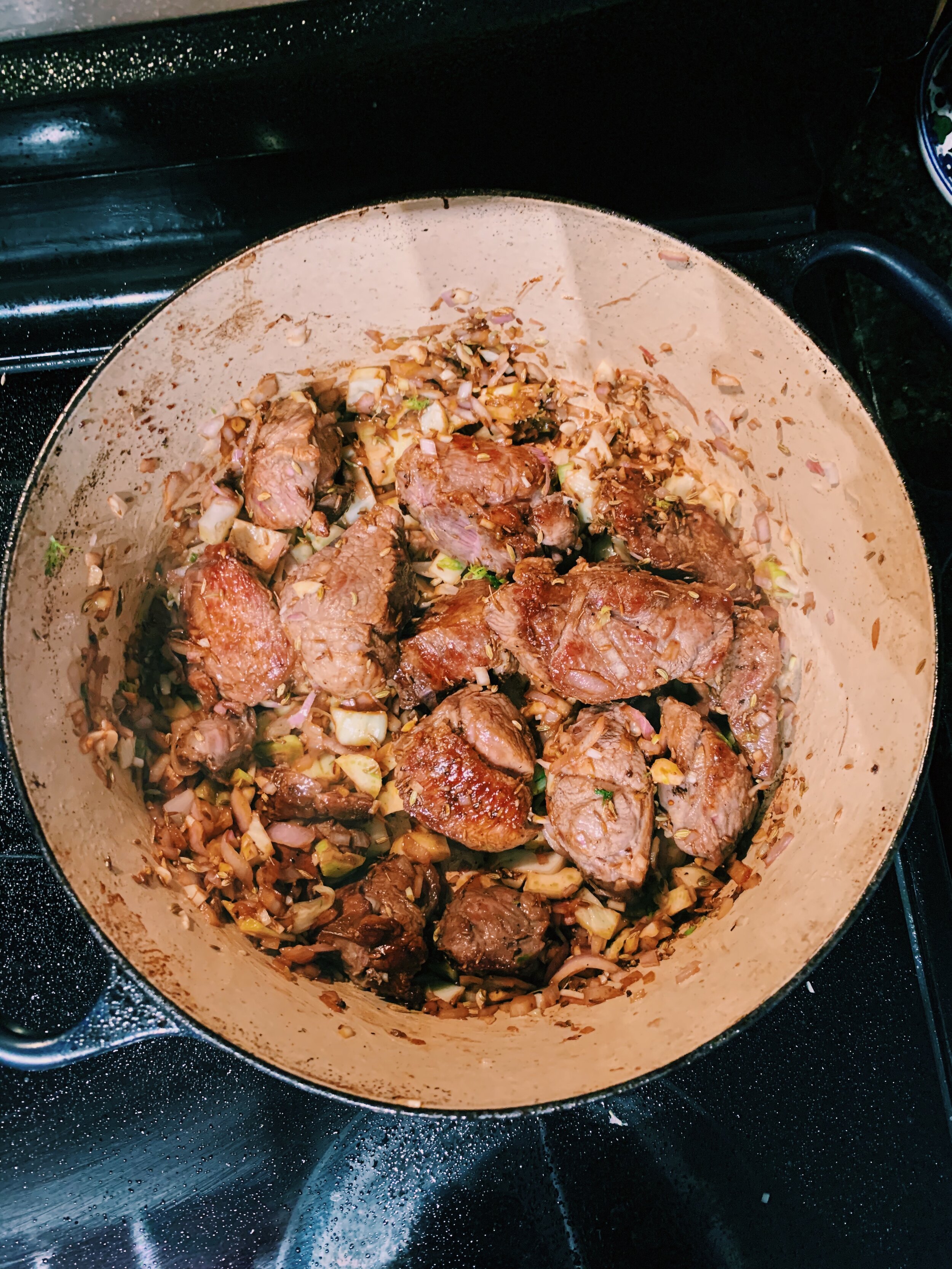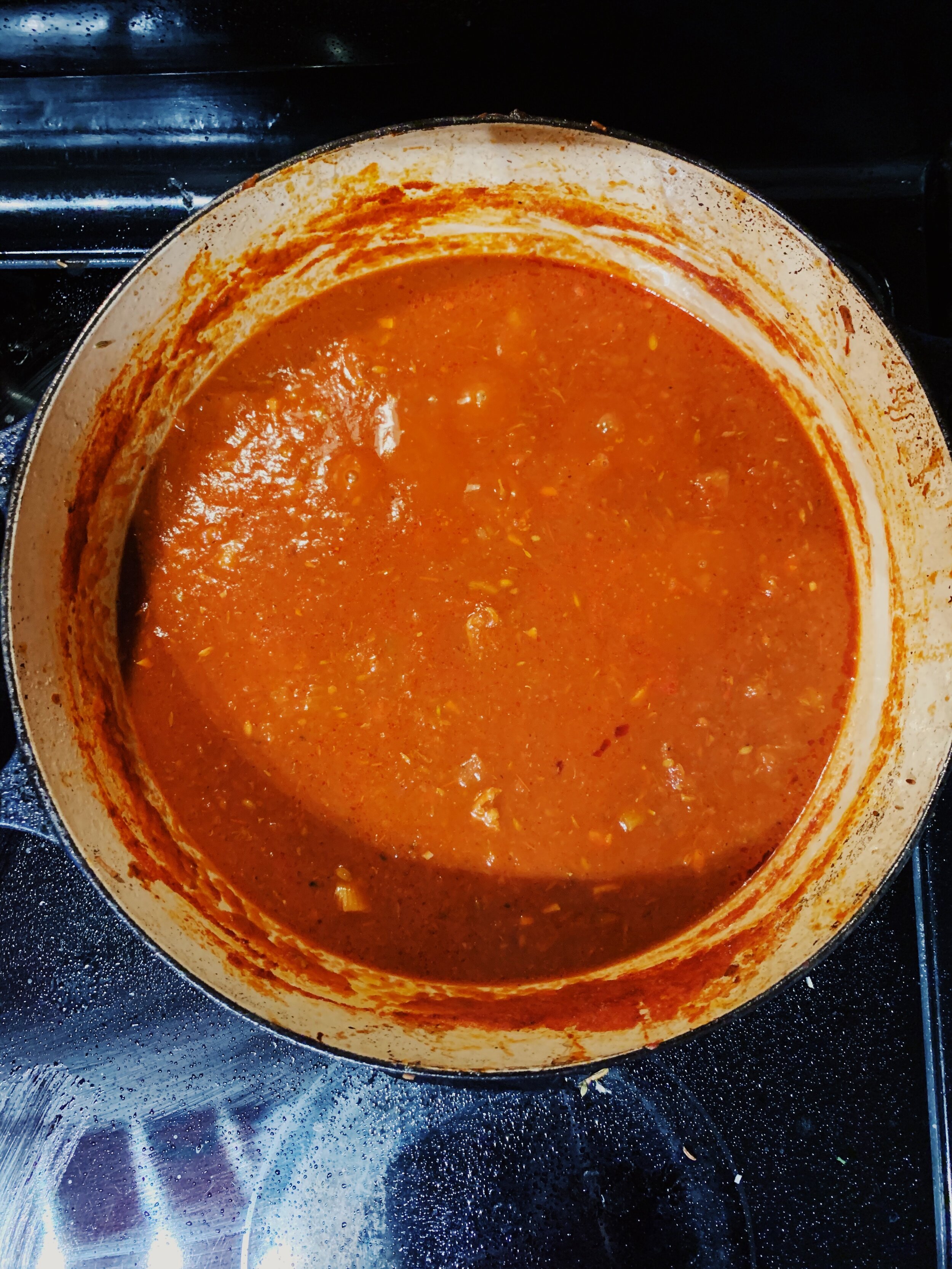I discovered earlier this year that radicchio is far too bitter for my taste. Most chicories are. I didn’t expect to enjoy this salad, which proved true. But one of my dinner guests enjoyed it so much that he took home all of the leftovers. I guess it’s an acquired taste.
This salad is very simple — torn radicchio and mint leaves tossed with grated garlic, lemon juice, and preserved lemon. Salt and pepper, of course. And laid atop salted greek yogurt. But no matter the flavor pairing, a salad that primarily consists of radicchio, in my opinion, will always be dominated by its inherent bitterness, even with a creamy dressing like yogurt. But the salad sure looked beautiful!
I served this salad alongside Alison’s Vinegar-Roasted Beets (love!), Yogurt-Marinated Leg of Lamb (post to come), and Sour Cream Flatbreads (a true omg).
218 recipes cooked, 7 to go.



